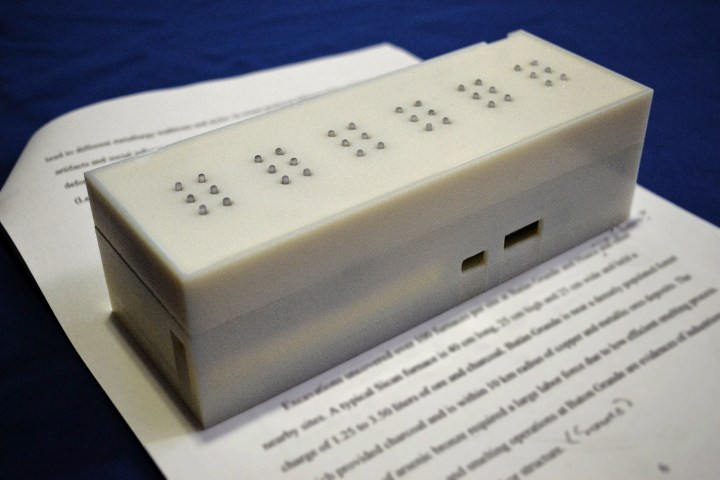
“We are creating the first dedicated text-to-braille converter to give people who are visually impaired greater access to the large amount of printed text information encountered in daily life,” Grace Li, a researcher on the project from MIT’s Department of Mechanical Engineering, told Digital Trends. “With our device, people who are visually impaired can take an image of any printed text and immediately read the resulting braille translation.”
The Tactile device features a scanning mechanism with which users can take a photo of a particular image they wish to translate; anything from a textbook to a restaurant menu. Optical character recognition (OCR) tech is then used to extract the text, the device translates it into Braille, and the lines of text appear on a physical display, which uses pins that move up and down to form the Braille characters.
At present, the device only captures a small portion of a document but in the final product, the team wants to be able to apply the technology to imaging an entire document.
“The ultimate goal with real-time translation is braille on demand,” Li continued. “We are aiming to have our final prototype ready for manufacture within the next one or two years. We will then be working with manufacturers and distributors to bring our device to market the following year.”
Team Tactile is hoping the finished device will cost users less than $100, making it significantly cheaper than any other comparable solution on the market.


